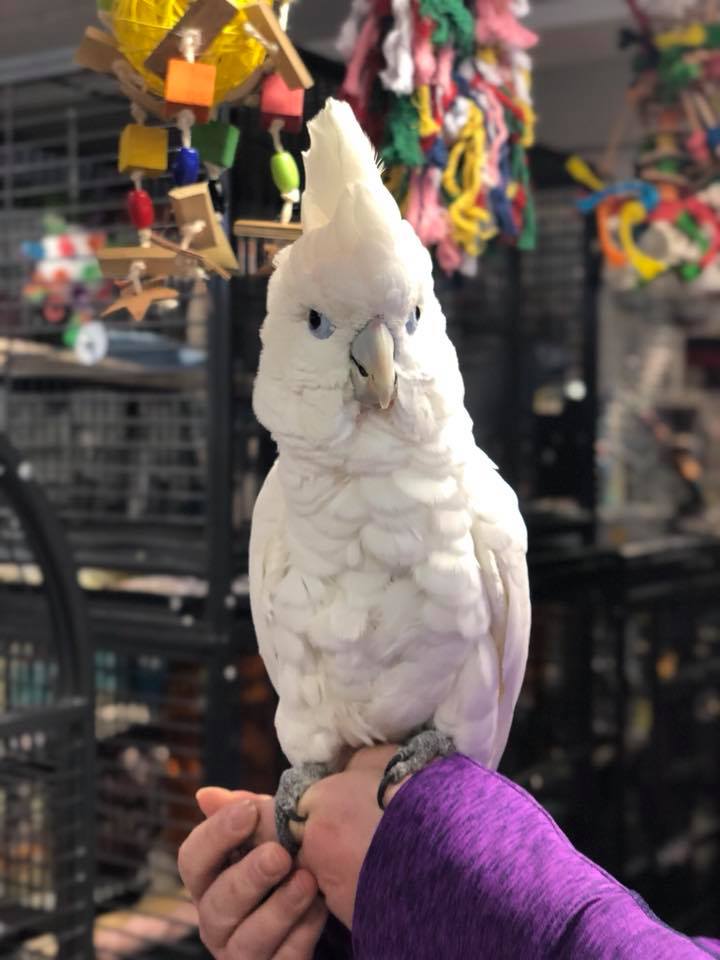Ducorps Cockatoos are sweet, quiet birds. They may attack their peers in small aviaries and thus should not be kept in communities. In the wild, they are relatively non-social also and are generally found in pairs. However, occasionally they are seen in small groups containing eight birds or less. In the wild, Ducorps Cockatoo perch in the tallest trees, and when they do come down to the ground to drink or feed, they are very cautious. Lookout birds are stationed in nearby trees, and if they feel threatened, the entire group will fly off screeching. Ducorps Cockatoos eat nuts and seeds, fruits, and vegetation. On occasion, they will descend in large numbers on local agricultural plantations and cause a great deal of damage; however, they are never harmed by farmers.
Ducorps Cockatoos need an aviary of at least 12 by six by six feet in dimension in aviculture. Although they are relatively hardy, they must be protected from winter frosts. Ducorps Cockatoos do well in captivity when fed fresh fruits and vegetables, oats, safflower and sunflower seeds, rice, wheat, and buckwheat. They need regular vitamin and mineral supplements and plenty of fresh water at all times. Ducorps Cockatoos also enjoy fresh branches sprouted with buds and leaves. They should be supplemented with pigeon food and sprouted wheat, sunflower, and safflower in the summer. Ducorps Cockatoos are very good at talking, although they are fairly quiet as a rule. The Ducorps Cockatoo is reported to be quite intelligent and playful in captivity. And they are also said to be quite adaptable around new people. They should be given plenty of toys to keep them from getting bored. They are also reported to be excellent escape artists! So this should be kept in mind when housing them. Some owners have resorted to using mini-locks on their cages to prevent unwanted breakouts.
Ducorps Cockatoos grow to about 13 inches in length. Although sometimes the hidden bases of the head and breast feathers have a pink carnation base, they have predominantly white plumage. Their crests are round and very broad. Du coup’s Cockatoos have pale yellow undersides to their wings and tails. Their feet are gray, and their bills are grayish-white. Males have dark brown or black irises, while females have more red coloration in their irises.
Ducorps Cockatoos are quite rare in aviculture. They are native to the Solomon Islands. They may cause considerable damage to local banana, papaya, and sweet potato plantations from time to time. Nevertheless, the inhabitants of the islands never harm these lovely birds. Their range covers forests and forest edges, mostly, and even extends into the lower edges of the cloud forests below 5,700 feet in elevation.










Reviews
There are no reviews yet.